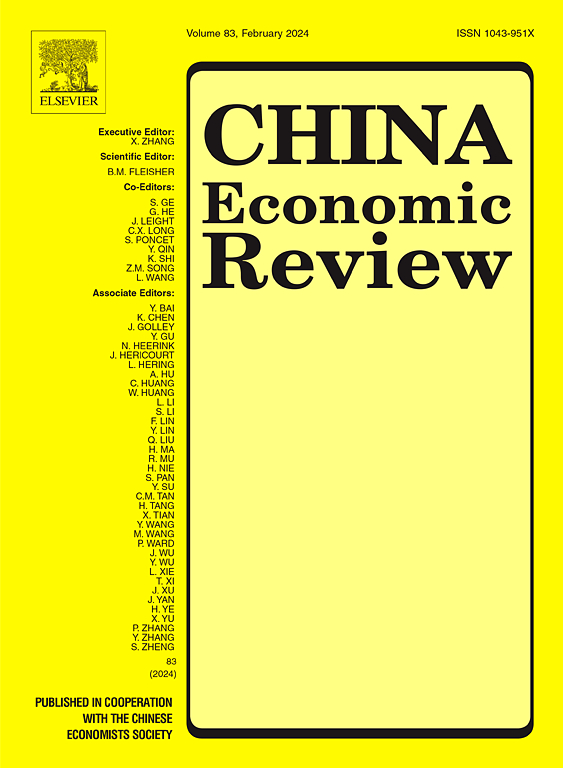Environmental regulation and equilibrium unemployment in China: Evidence from a multiple-sector search and matching model
IF 5.2
1区 经济学
Q1 ECONOMICS
引用次数: 0
Abstract
We build a two-sector general equilibrium model that incorporates abatement technologies and search-and-matching frictions in the labor market to examine how different environmental regulations affect emission reduction and unemployment. By emphasizing the role of various decisions of micro firms, labor market frictions, and the cross-sectoral labor movement in the transmission process of environmental regulation, we demonstrate the conflict between environmental regulation and unemployment in different parts and aspects of economic behavior, providing a theoretical basis for analyzing and solving the contradiction of “environmental governance-economic sustainability-unemployment”. Using Chinese data to calibrate the model, we find that the equilibrium unemployment caused by the environmental regulation during the 12th Five-Year Plan period is far less than the reduction in production employment of directly regulated enterprises caused by the same environmental regulation, which proves that the econometric regression method with regulated enterprises as the research object will greatly overestimate the unemployment effect of environmental regulation. However, we predict that during the 14th Five-Year Plan period, as environmental regulations become stricter, the intertwining of strict regulations and labor market frictions will make the transfer effect less effective in mitigating the direct negative impact of environmental regulations on employment. We also discover that there are two main reasons why quotas generate less unemployment than emission taxes when the same total emission reduction target is achieved: (1) Quota leads to more job creation caused by abatement requirements, while emission tax does not cause such job creation until a reasonably high threshold is reached. The emission tax causes the shrinking of the polluting sector by adding the cost of the emission tax to the product price and transferring it to consumers, which boosts the negative scale effect of environmental regulation on unemployment. (2) Under the emission tax, more unemployed workers move into the clean sector, resulting in labor market congestion and economic structural imbalances, cutting down the ability of the clean sector to absorb unemployed workers.
求助全文
约1分钟内获得全文
求助全文
来源期刊

中国经济评论
ECONOMICS-
CiteScore
10.60
自引率
4.40%
发文量
380
期刊介绍:
The China Economic Review publishes original works of scholarship which add to the knowledge of the economy of China and to economies as a discipline. We seek, in particular, papers dealing with policy, performance and institutional change. Empirical papers normally use a formal model, a data set, and standard statistical techniques. Submissions are subjected to double-blind peer review.
 求助内容:
求助内容: 应助结果提醒方式:
应助结果提醒方式:


